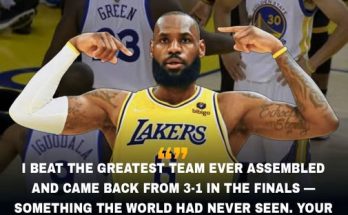For decades, the Seattle Mariners have battled an organizational hurdle that has kept them from becoming a true, sustained contender: the inability to consistently develop and transition homegrown hitters from the minor leagues to the majors. While the team has produced outstanding pitchers, both starters and relievers, their track record with position players has been much less encouraging. Promising prospects often arrived with fanfare, only to fizzle out under the pressures of big-league pitching, inconsistency, and the mental grind of a 162-game season. It’s been a cycle that frustrated fans, coaches, and front-office decision-makers alike, leaving the Mariners reliant on trades and free-agent signings for offensive production. But in Cole Young, the organization may finally have found the player who signals that this long-standing issue is turning a corner. His breakout, his approach, and his ability to adjust at the highest level point to a shift in both player development philosophy and execution, offering a glimmer of hope that the franchise may have cracked the code on producing productive, homegrown bats.
When Young was drafted in the first round in 2022, expectations were optimistic but measured. Scouts saw a polished hitter with a compact, left-handed swing, a good feel for the strike zone, and above-average defensive tools at shortstop. The Mariners didn’t see him as a pure power threat; instead, they saw a hitter who could get on base, spray the ball to all fields, and provide steady defense—a profile they desperately needed given how their lineup has struggled with contact and on-base percentage over the years. Even so, the distance from draft day to a successful major league career is long and winding, and many in Seattle had been burned before by hyped prospects who never panned out.
What has made Young’s ascent so different is how quickly he’s adapted to each new level without losing the core traits that made him a top prospect. In the low minors, he consistently posted high walk rates and kept strikeouts to a minimum, showing patience beyond his years. As he climbed to Double-A and eventually Triple-A, pitchers began testing him with breaking balls off the plate and high-velocity fastballs at the top of the zone. Young didn’t just survive those challenges; he learned from them, tightening his swing mechanics and making subtle adjustments to his load and timing. By the time the Mariners called him up, it wasn’t a question of whether he could hit major league pitching—it was whether he could maintain his approach against the best arms in the world.
The early returns have been impressive. Young has demonstrated a mature approach in the batter’s box that’s rare for a rookie. He’s not chasing pitches out of the zone, he’s taking quality at-bats even when he’s behind in the count, and he’s showing an ability to foul off tough pitches until he gets one he can drive. His line-drive-heavy swing has led to consistent contact, and while the power numbers may not yet match those of the league’s biggest sluggers, he’s been delivering extra-base hits at a steady clip. Just as importantly, his on-base skills have given the Mariners a spark at the top or middle of the order, creating opportunities for run production in a lineup that has often struggled to string hits together.
This success isn’t just about Young’s natural talent—it’s also about the Mariners’ willingness to make changes in how they prepare their young hitters for the majors. In the past, Seattle prospects often struggled with the transition because the jump in competition was too stark. The organization’s developmental system didn’t always replicate major league-level pitching or emphasize the mental adjustments required to survive in the big leagues. But in recent years, player development staff have placed more emphasis on individualized hitting plans, incorporating advanced analytics, video review, and biomechanical analysis to refine swings and decision-making. Players like Young are now getting more exposure to high-velocity pitching machines, more targeted work against breaking balls, and more in-game scenarios that mimic the pressure of the majors.
For Young, that preparation has been invaluable. He arrived in Seattle not just with a refined swing, but with an understanding of how pitchers would try to attack him. He knew he’d see more first-pitch strikes, more sequences designed to induce weak contact, and more high-leverage at-bats where the pitcher’s goal was to make him uncomfortable. Instead of being overwhelmed, Young has embraced those challenges, making adjustments mid-game and even mid-at-bat—an advanced skill that separates good hitters from great ones.
His defensive play has also been a boost for the Mariners. While offense is what typically drives fan attention, the stability Young provides at shortstop has a ripple effect throughout the roster. His range, soft hands, and quick transfer on double plays have helped the pitching staff, allowing them to pitch with confidence knowing they have a sure-handed defender behind them. For a team that has often been built on run prevention and pitching depth, having a shortstop who can both defend and hit for average is a game-changer.
Perhaps the most encouraging part of Young’s breakout is the example it sets for other prospects in the system. The Mariners have several young hitters working their way up the pipeline, and seeing a peer succeed at the major league level can be a powerful motivator. It signals to players in Double-A and Triple-A that the path is real, that the organization’s developmental process can produce big-league contributors. That kind of cultural shift can have a compounding effect, where one success story paves the way for many more.
From a front-office perspective, Young’s emergence is also strategically significant. For years, the Mariners have had to spend prospect capital in trades or money in free agency to address offensive shortcomings. If they can start producing hitters internally, that frees up resources to be allocated elsewhere, whether it’s strengthening the pitching staff, adding veteran depth, or extending core players. In an era where roster flexibility and payroll efficiency are crucial, having homegrown contributors like Young is an enormous competitive advantage.
Fans have taken notice too. Mariners supporters, who have lived through more than their share of disappointments with hyped hitting prospects, are starting to see Young not as a flash in the pan but as a building block for the future. His poise, his work ethic, and his consistent production are earning him the kind of respect that can anchor a clubhouse for years to come. In a sport where player development is as much about mindset as it is about mechanics, Young’s demeanor stands out—he doesn’t seem rattled by slumps, doesn’t press in big moments, and seems to genuinely enjoy the grind of the season.
There’s also a sense that Young’s breakout could coincide with a larger shift in the Mariners’ offensive identity. For years, Seattle has been known for streaky hitting, heavy strikeout totals, and long stretches where the lineup simply couldn’t produce runs. Young’s approach—contact-oriented, patient, and adaptable—could be a template for the kind of hitters the organization prioritizes moving forward. If they can pair that with selective power hitters who thrive on driving the ball when they get their pitch, they could build a balanced offense capable of sustaining success over a full season.
Of course, it’s still early in Young’s career, and baseball history is littered with examples of players who started hot only to fade after pitchers adjusted to them. The true test will come as the league gets more data on his tendencies and begins exploiting any weaknesses. But if his track record in the minors and his early big-league adjustments are any indication, Young has the tools and mindset to counterpunch and keep evolving as a hitter.
The Mariners have waited a long time to see a prospect come through the system, step into the lineup, and immediately make a difference with the bat. Cole Young’s rise doesn’t just fill a hole on the roster—it offers evidence that the organization has learned from past mistakes and invested in the right developmental strategies to maximize their talent pipeline. If this is indeed the beginning of a new era for Seattle’s homegrown hitters, then Young’s breakout will be remembered not only as the start of a promising career but as the moment the Mariners finally solved one of their franchise’s most stubborn problems. And for a fan base hungry for sustainable success, that’s the kind of breakthrough worth celebrating.



